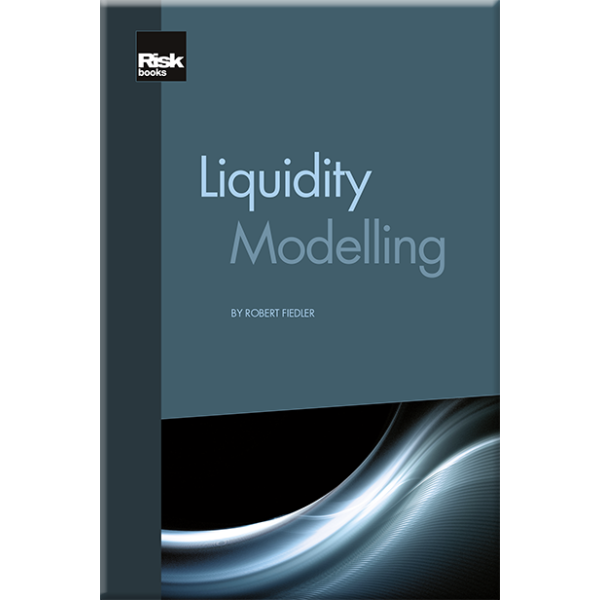Liquidity Modelling
Liquidity risk is hard to understand. It needs to be broken down into its components and drivers in order to manage and model it successfully.
The market turmoil that began in mid-2007 re-emphasised the importance of liquidity to the functioning of financial markets and the banking sector. In advance of the turmoil, asset markets were buoyant and funding was readily available at low cost. The reversal in market conditions illustrated how quickly liquidity can evaporate and that illiquidity can last for an extended period of time. Financial regulators across the globe are urging institutions to address this dimension of financial risk more comprehensively.
The global financial crisis showed the crippling effect poor liquidity risk management can have on markets and on firms.
In its wake, market practitioners and regulators alike recognise the necessity of effective management of liquidity and assessment of risks. Yet liquidity remains fuzzy even at a conceptual level, and liquidity risk management an emerging discipline.
Liquidity Modelling by Robert Fiedler is a guide on how to model and manage liquidity risk for financial market practitioners.
The author’s practical approach equips the reader with the tools to understand the components of liquidity risk, how they interact and, as a result, to build a quantitative model to display, measure and limit risk.
| ISBN | 9781906348465 |
|---|---|
| Navision code | MLMO |
| Publication date | 28 Nov 2011 |
| Size | 155mmx235mm |
Robert Fiedler
Robert Fiedler
Robert owns and runs Liquidity Risk Corp. which consults on methodology and processes and as well builds prototypes and IT solution for liquidity risk.
In the first half of his career, Robert spent over a decade in the treasury/dealing rooms of numerous international major banks as a money market liquidity manager, trading interest rate products and derivatives. Later he switched to risk management and developed Deutsche Bank Group’s liquidity risk methodology on which he successfully built a global system (LiMA) which measures and limits the bank’s funding liquidity. Moving into software development, Robert became Country Co-ordinator for Germany and Executive Director of ALM and Liquidity Risk Solutions at Algorithmics Inc., Toronto. Subsequently he joined the board of Fernbach Software, Luxemburg where he oversaw the development of ALM, performance measurement, IFRS and liquidity risk software. During this time he constantly developed liquidity methodologies and teached his research results. Jointly with the University of St. Gallen, Switzerland he developed a stochastic model which optimises the risk and return of investing Non-Maturing Assets and Liabilities.
1 Introduction
- What is this book about?
- Illiquidity risk: a risk type of its own?
- Measuring illiquidity risk: what is the problem?
- Comparing the measurement of liquidity and other risks
- What is covered by this book?
2 Setting the Scene: Why Liquidity Is Important in a Bank
- Banks, financial transactions and balance sheets
- Income, expense and earnings
- The time value of payments
- Capital
- Value, risk and capital
- Conclusions
3 What Is Liquidity Risk?
- Illiquidity
- Insolvency and illiquidity
- Liquidity risk of financial instruments and markets
- Liquidity of markets for central bank funds
- Liquidity-induced value risk
- Capital as a buffer for liquidity risk?
- Conclusions
4 Illiquidity Risk: The Foundations of Modelling
- Describing the bank’s balance sheet
- Measuring illiquidity risk
- Conclusion
5 Capturing Uncertainties
- Stationary modelling
- Dynamic modelling and hypothetical transactions
- The role of optionality
- Modelling optionality
- Conclusions
6 A Template for an Illiquidity Risk Solution
- Scenarios
- Technical implementation
- Inventories and flows
- Inventories and flows of transactions
- Taxonometry
- Conclusion
7 The Counterbalancing Capacity
- Liquidity risk requirements
- CBC: The problem
- FLE and CBC
- Building blocks of a technical solution
- Solving the problem for classes of securities
- Further issues regarding the CBC
- Conclusions
8 Intra-Day Liquidity Risk
- Liquidity risk and intra-day liquidity risk
- The measurement of liquidity risk
- The payment process
- Measurement of ILR within an enhanced FLE or separately?
- ILRS that could be measured with an enhanced FLE
- ILRS that go beyond the enhanced FLE
- Other issues
- Risks related to correspondent banks
- Idiosyncratic risks of the payment processes
- Mitigation of liquidity risks
- Conclusion
9 Liquidity Transfer Pricing and Limits
- Basic transfer-pricing concepts
- Deterministic costs of the replicating transaction
- Transfer pricing of risk
- Summary of the pricing components
- Liquidity risk limits
- Regulatory requirements
- Conclusions
10 The Basel III Banking Regulation
- Liquidity risk in Basel III
- The liquidity coverage ratio
- How can a bank improve its LCR?
- The net stable funding ratio
- How can a bank steer its NSFR?
- Conclusions




